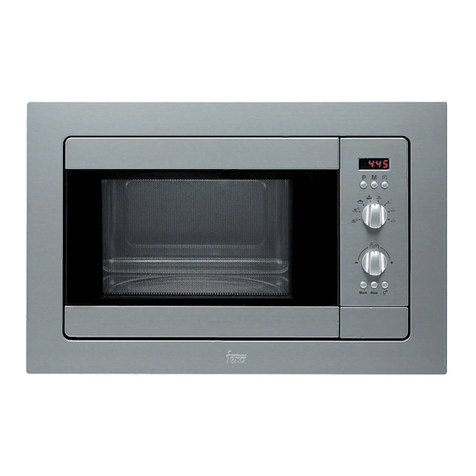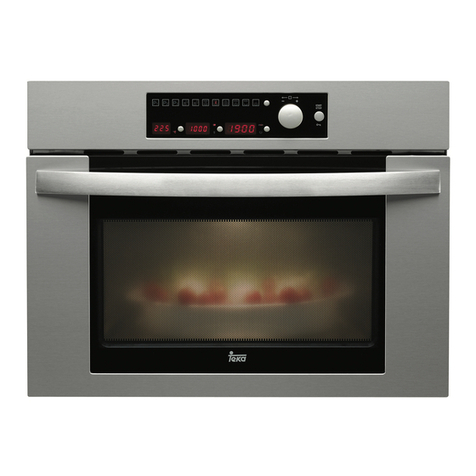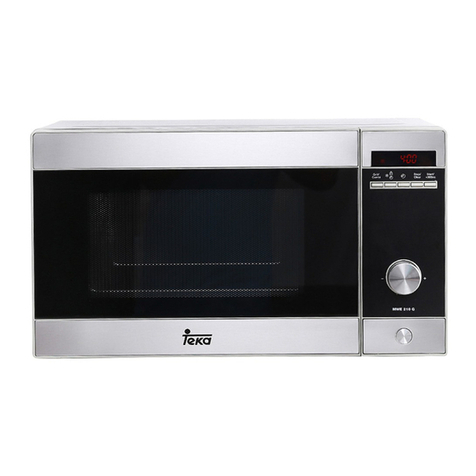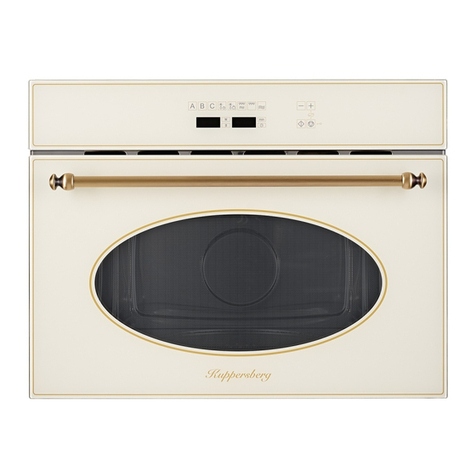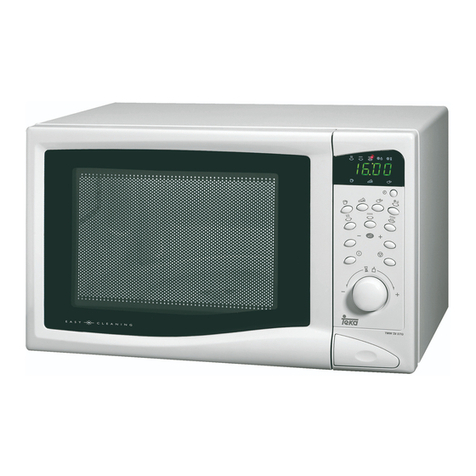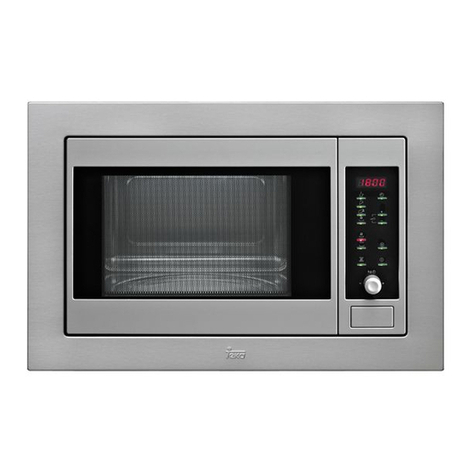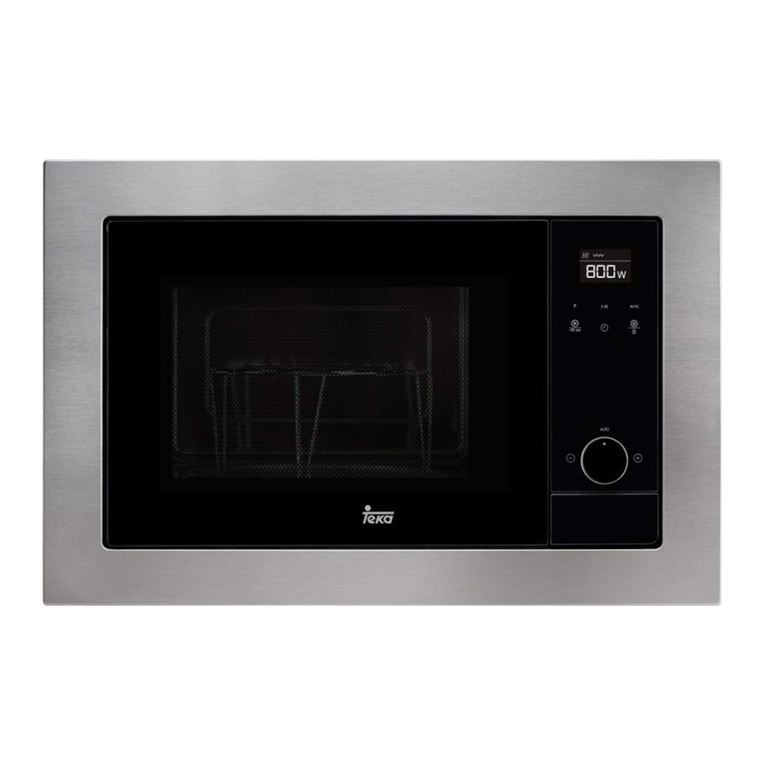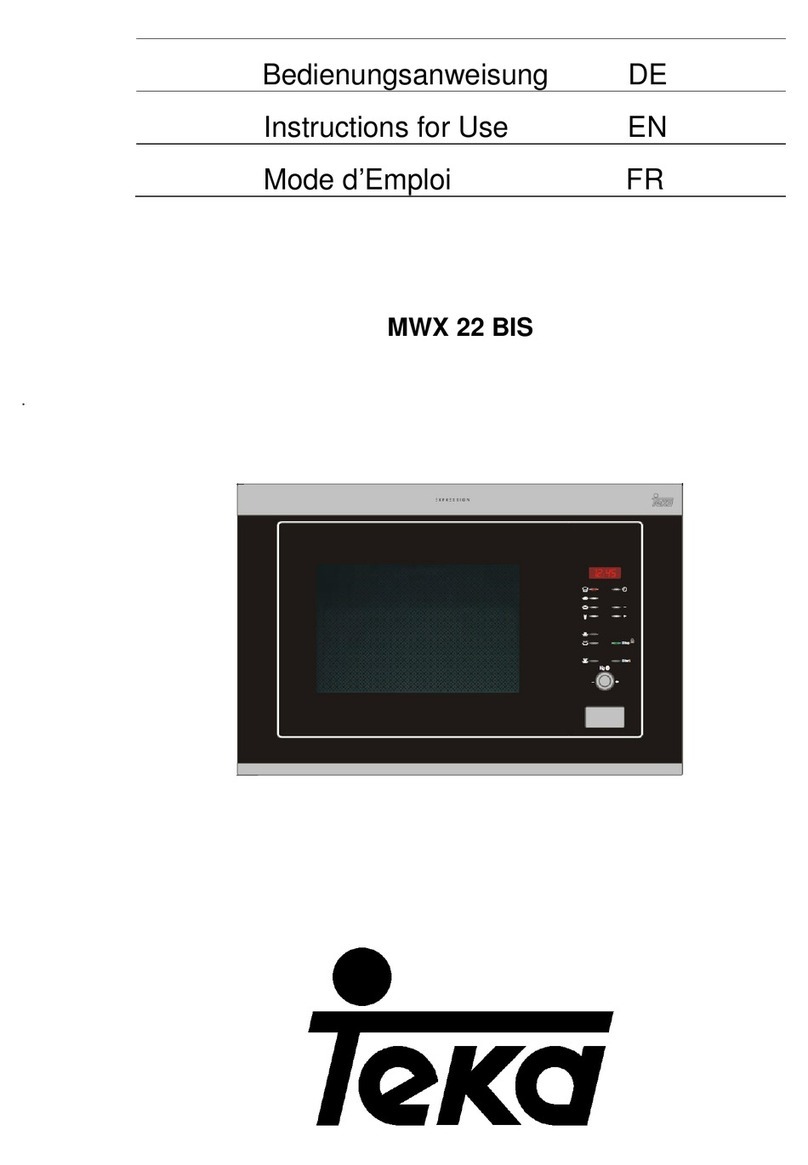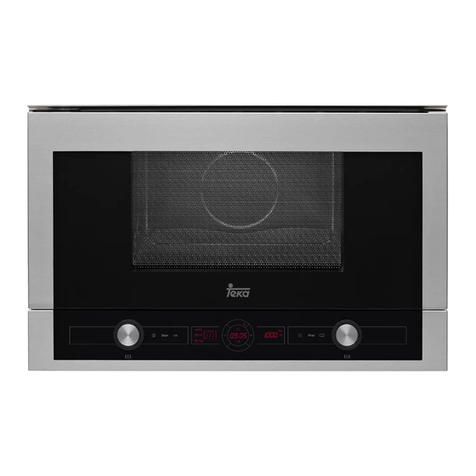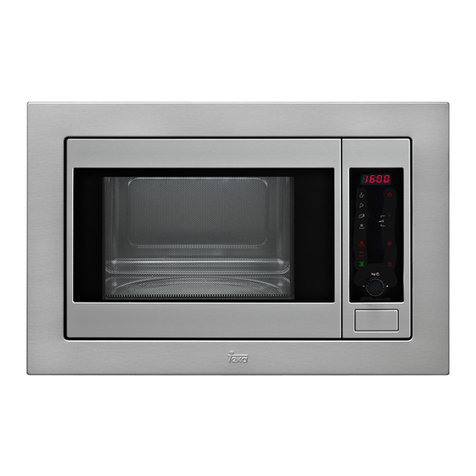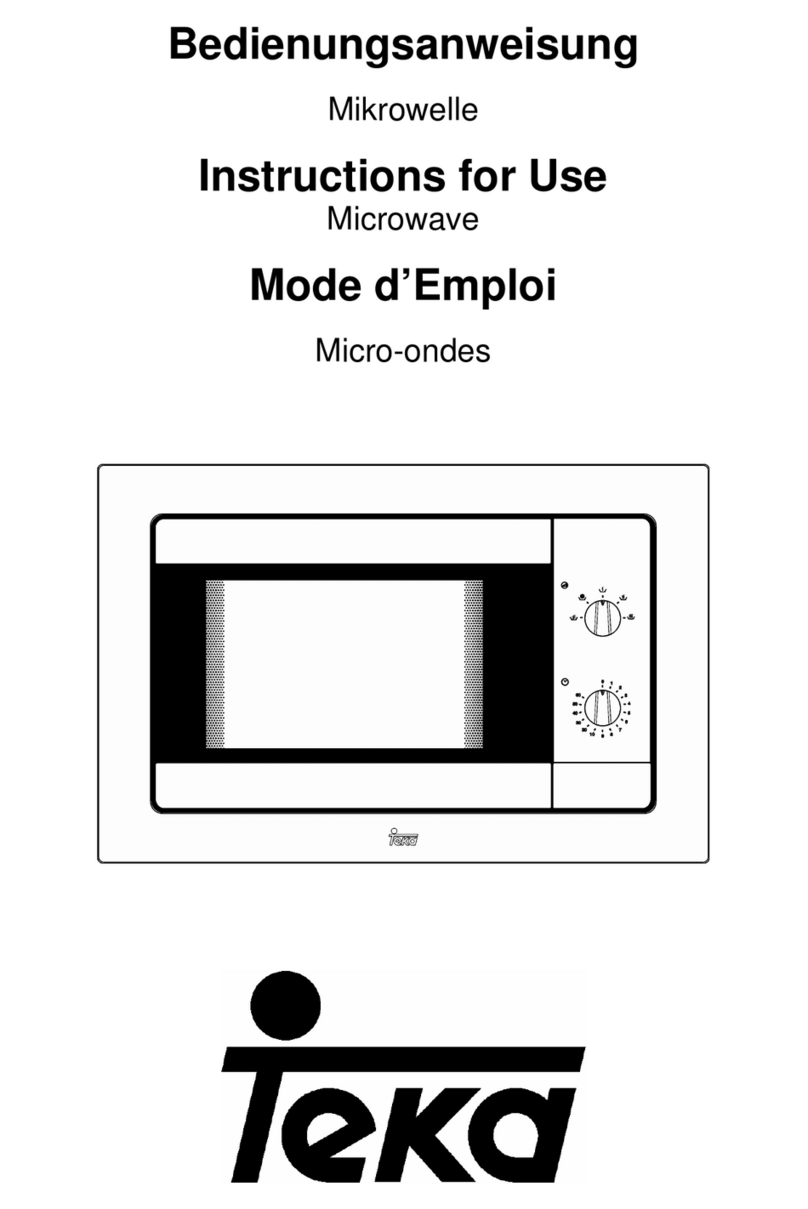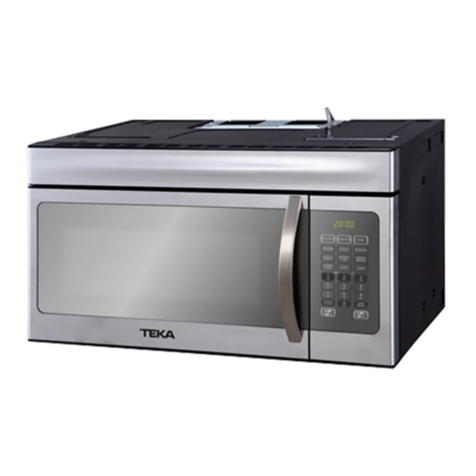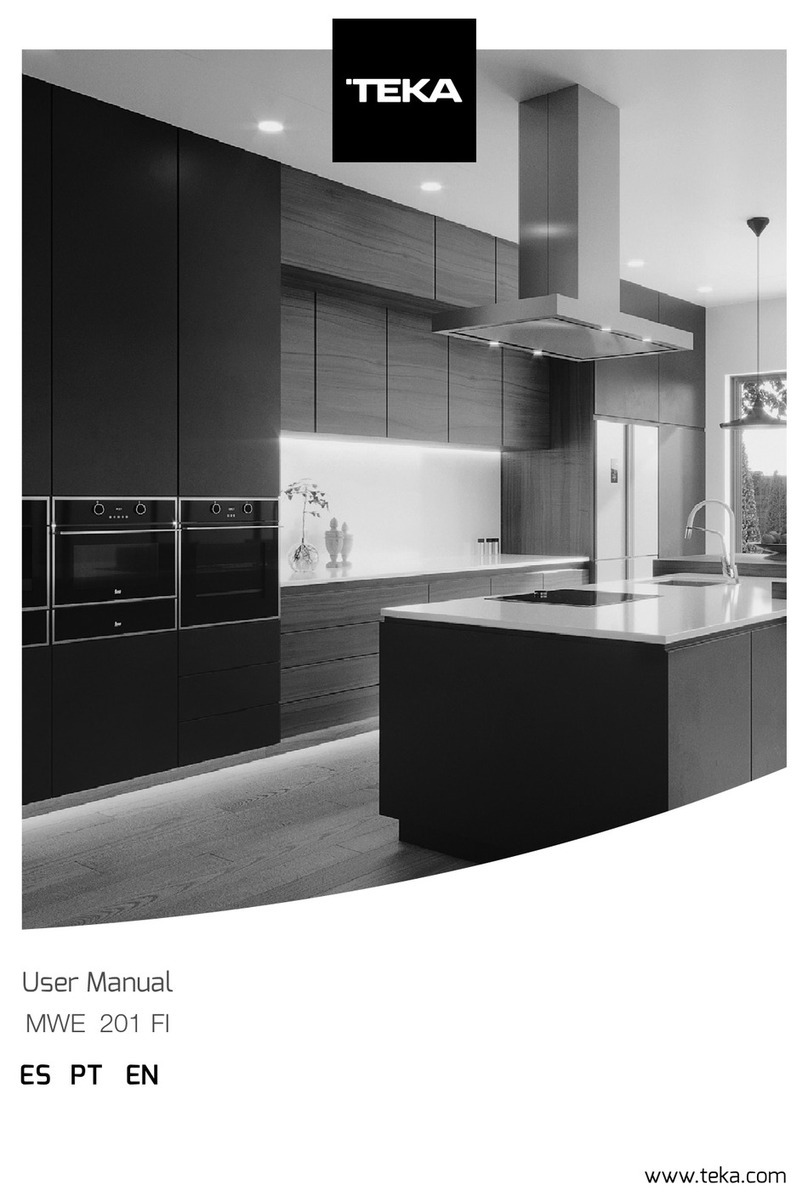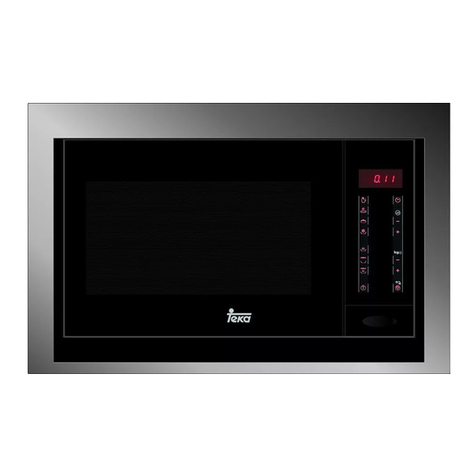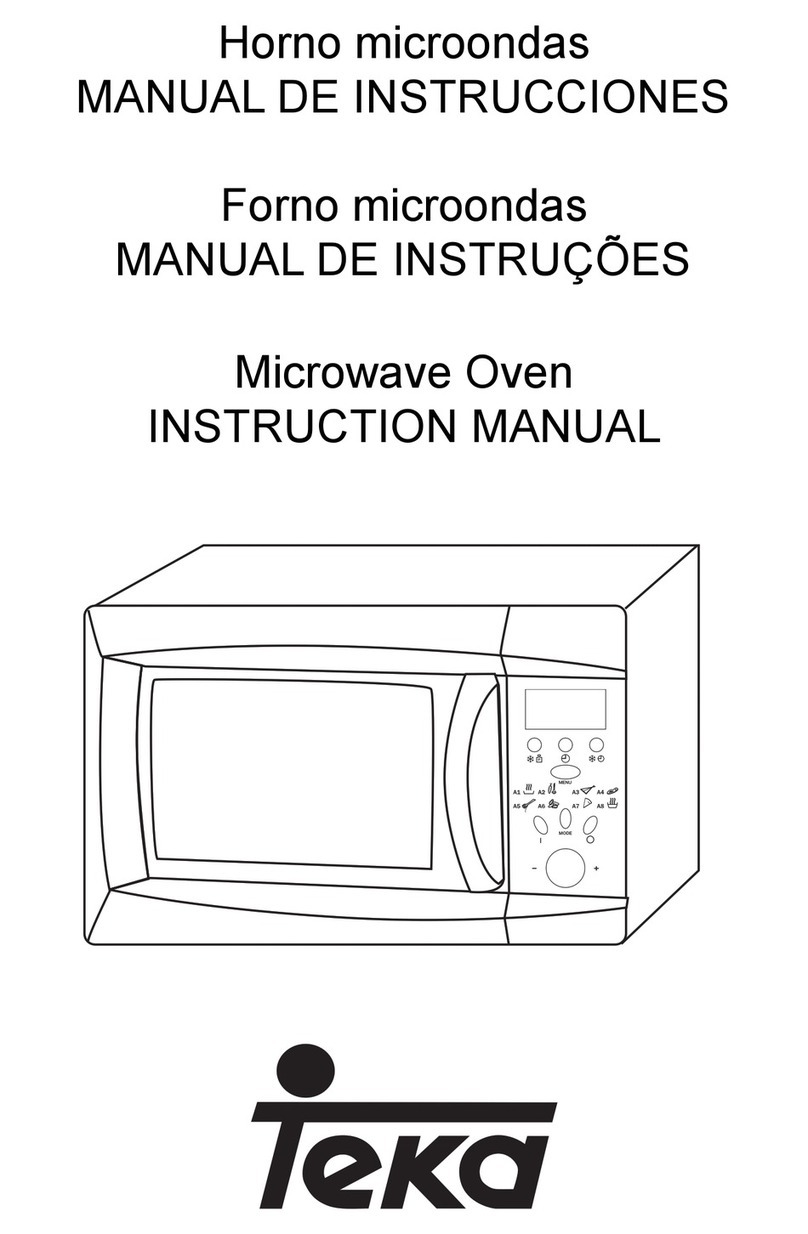
30
EN
Safety tips
•Warning! In order to avoid any type of flame,
only use the microwave when you are there to
supervise. Very high power levels or very long
cooking times may heat the food to excess and
cause fires.
•If you see smoke or fire, keep the door closed,
to put out the flames. Switch off the appliance
and remove the plug from the socket.
•Warning! This appliance is not intended for
use by persons (including children) with
reduced physical, sensory or mental
capabilities, or lack of experience and
knowledge, unless they have been given
supervision or instruction concerning use of the
appliance by a person responsible for their
safety. Children should be supervised to
ensure that they do not play with the appliance.
•Warning! Considerable care is required when
the grill is functioning. Keep children away from
the appliance!
•Our appliances meet the necessary regulations
and rules for technical equipment. However,
these do not cover all the possible accident
risks.
•When using inflammable materials, such as
plastics or paper containers, to heat or cook
foods, the cooking process must be monitored
on a continuous basis, because of the risk of
fire.
•Before using dishes or containers in the
microwave, check if they are microwave-save-
Only use microwave-safe dishes.
•The power cable should not touch damp,
sharp-edged objects or the appliance when it is
hot.
•When connecting electrical appliances in the
vicinity of the microwave, ensure that the
power cables do not touch the microwave
when it is hot and that they do not get caught in
the oven door, in order to avoid damage and
danger.
•Pay attention to operating faults. The appliance
may not be used in the following cases:
- If the door does not close properly;
- If the door-hinges are damaged;
- If the contact surfaces between the door and
the front are damaged;
- If the glass in the window is damaged;
- If there is often an electrical arch inside the
oven, without the presence of any metallic
object.
•The ventilation holes may not be covered.
Cleaning/ maintenance:
•Before carrying out any maintenance or
cleaning, remove the plug from the socket.
•Please remember the cleaning tips contained
in the section “Cleaning and care”.
•The contact surfaces (the front of the cavity
and the inside of the door) must be kept quite
clean in order to guarantee correct functioning.
Clean the contact surfaces with a neutral
detergent and a cloth that does not scratch or
cause any type of friction.
•Warning: Never use the appliance if the
contact surfaces are damaged. Only use the
appliance again if it has been repaired by a
technician from the Technical Support Service.


